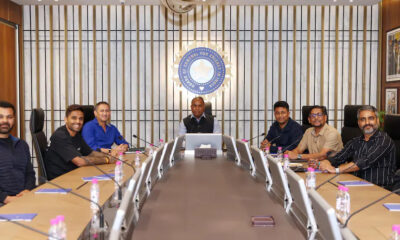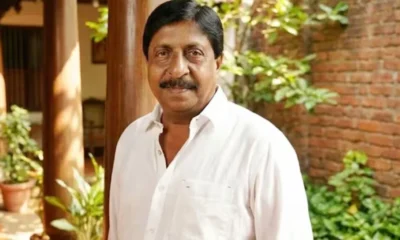Latest world news
US fireworks
Published
9 years agoon
By
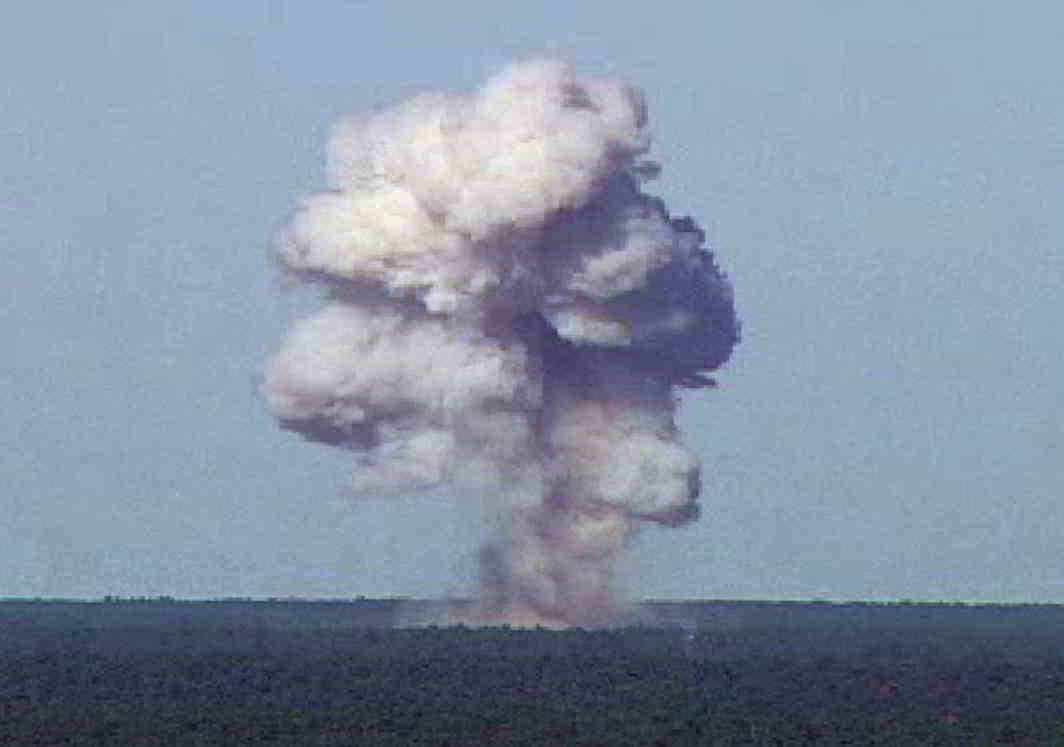
[vc_row][vc_column][vc_column_text]Awaiting details from Afghanistan, a look at the Syrian outrage
By Saeed Naqvi
President Trump has furnished proof that the leader of the Free World, which dropped the first nuclear bomb on Hiroshima, remains true to form: it has dropped an even bigger Mother Of All Bombs (non-nuclear, we are being persistently reminded) on Nangahar province in east Afghanistan on what are being described as IS tunnels. Since details are not known, let us first sort out the Syrian outrage.
The alleged sarin gas attack on Khan Shaykhun, a small town in Idlib province where the Jabhat al-Nusra’s militant offshoots are now fighting with their backs to the wall, invited a massive US retaliation: 59 cruise missiles were fired on the nearby Shurayat air strip to teach Bashar al-Assad a lesson.
Analysts under pressure to meet deadlines, hurriedly suggested the strikes made Trump look virile in his meeting with Xi Jinping in Florida, that Rex Tillerson looked strong in his meeting with Sergei Lavrov and that the North Koreans will think twice before their next menacing launch. All of this is fanciful because the big players know the truth. Yes, the opposition to the Syrian army, mostly Al-Nusra and IS wearing other labels, and their regional sponsors, now know that the Trump, browbeaten at home, can be dragged into the Syrian fight. The civil war can be prolonged.
To make sense of the air strikes, it would be useful to visit a similar incident in August 2013. Then, too, a sarin gas attack was allegedly mounted on an even bigger scale on Ghouta township, on the outskirts of Damascus. Two US missiles took off from a US base in Spain—in retaliation, of course. On this occasion, the Russian anti-missile paraphernalia at their base in Tartus, brought down the missiles in Mediterranean Sea. Apparently, a sizeable number of missiles fell in the sea this time, too. So the Russian S400 and S300 are indeed operational.
President Obama would have met President Vladimir Putin at the September 2013 G20 summit in St Petersburg from what the US “Deep State” had designed to be a position of strength once the two missiles have been launched. Instead his face was in the lower mould during his bilateral aside with the Russian leader. If the Russian intercepts had caused a loss of face, subsequent face saving for the Obama administration in 2013 was also provided by the Russians. They suggested that Syria sign the Chemical Weapons Convention and surrender its chemical weapons.
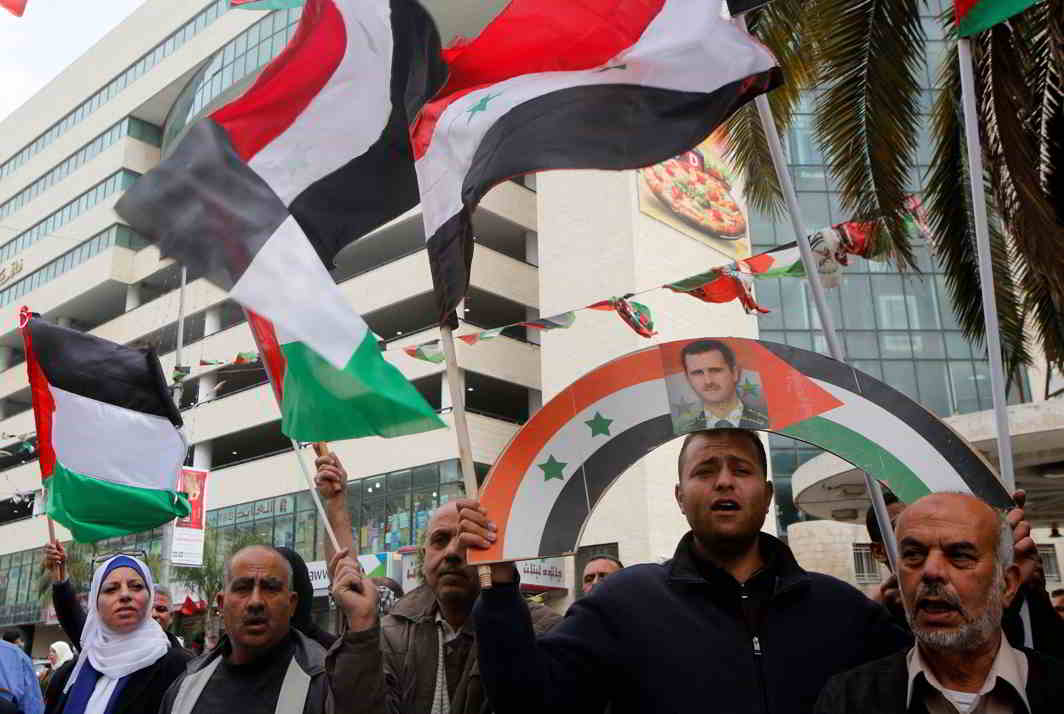
A Palestinian demonstrator holds a placard with a poster depicting Syria’s President Bashar al-Assad during a protest against American airstrikes in Syria, in the West Bank city of Nablus, Reuters/UNI
On September 11, 2013, Putin wrote in The New York Times: “No one doubts that poison gas was used in Syria. But there is every reason to believe it was used not by the Syrian army, but by opposition forces, to provoke intervention by their powerful foreign patrons, who would be siding with fundamentalists.”
Putin then points to something even more sinister. “Reports that militants are preparing another attack, this time against Israel, cannot be ignored.”
In other words, the opposition was checked in their tracks by timely Russian intervention. Air attacks in retaliation for the false flag at Ghouta were prevented. The desperate opposition was now about to play its trump card: launch a poison gas attack on Israel.
In his weekly address to the nation, Obama said: “Until recently, the Assad regime would not admit that it possessed chemical weapons. Today Syria has signaled a willingness to join with 189 other nations, representing 98 percent of humanity, in abiding by an international agreement that prohibits the use of chemical weapons.” There was fulsome praise for Russia. “Russia has staked its own credibility in supporting this outcome,” Obama said.
It was clear even then that this Washington-Moscow entente over Syria would set the cat among the pigeons in Tel Aviv and Riyadh. All their huge investments in arms, money, mercenaries and years of planning was liable to be wasted in Obama’s second term when John Kerry because his Secretary of State.
On the issue of Russia and Syria, the Deep State, with the media as amplifier, was not going to give up. No wonder it pitched its tent behind Hillary Clinton’s platform for the 2016 Presidential elections. The spider in the Deep State web, weaving the Syrian yarn is one Robert Stephen Ford, US ambassador to Damascus in 2011 when the “insurgency” was first initiated.
The most accurate narrative of Ford, in cahoots with this French counterpart, Eric Chevallier, and how they stoked the fires in Syria should be available with New Delhi’s ministry of external affairs. Of the entire diplomatic corps in the Syrian capital that this reporter met, the sharpest eye was that of Ambassador V.P. Haran.
The grinding of the US, Israeli, Saudi propaganda machine in Syria never stopped.
Every now and then the White Helmets in Syria would produce a heartwrenching story of “Assad’s brutality”. The photograph of a four-year-old Syrian boy, his face burnt by “Assad’s” attack on civilians in Aleppo, found its way to the final Trump-Clinton debate in Las Vegas on October 19, 2016. Clinton simulated a lump in her throat describing the child with burns as evidence of indiscriminate Russian (not just Syrian) bombing of civilians.
Exactly on cue, Christiane Amanpour of the CNN, in her high profile interview with Russian Foreign Minister, Sergei Lavrov, produced the very same picture for Lavrov to see. “This is a crime against humanity,” Amanpour thundered. Lavrov looked at the photograph. “Very tragic,” he said. He then made a bold assertion: the US was probably supporting the Jabhat al-Nusra.
Meanwhile, NGOs in the field furnished video recordings of the “burnt boy” being diligently filmed to be presented to the world media—propaganda of the macabre genre.
If the Pulitzer Prize winning investigative journalist Seymour Hersh is to be believed, the West is itself implicated in the sarin gas scandal. His outstanding piece in the London Review of Books after Ghouta, quite incontrovertibly establishes that “the sarin that was used didn’t come from Assad’s stockpiles”. He quotes British Intelligence for this detail. He adds:
“A secret agreement in 2012 was reached between the Obama administration and the leaders of Turkey, Saudi Arabia and Qatar, to set up a sarin gas attack and blame it on Assad so that the US could invade and overthrow Assad.”
Sarin gas has been in the news earlier when Bill Clinton’s Defence Secretary William Cohen caused journalists as senior at Peter Arnett and Bernard Shaw to be sacked for having pointed to US stockpiles or nerve gas which was used on a village in Laos to hunt down US army defectors. It became notorious as Operation Tailwind. The official version then was that the gas was not dropped on Americans. That which was dropped, on whoever, was not sarin but “but garden variety CS tear gas.” The reporters stuck to their guns.[/vc_column_text][/vc_column][/vc_row]
You may like
-
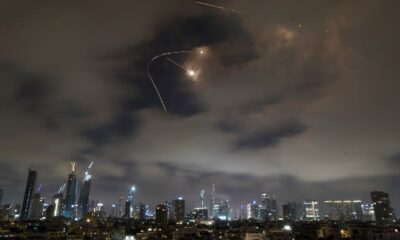

US bombs 3 nuclear sites in Iran
-


Pic of Trump’s phone lock screen goes viral, internet links it with 9/11 theories
-
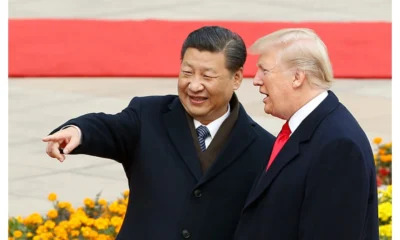

China halts Boeing jet deliveries amid trade war with US
-


US airstrikes in Yemen: 31 killed after Donald Trump launches large-scale strikes on Houthis
-


India, US to increase market access, cut tariff, non-tariff barriers: Centre tells Lok Sabha
-


China says if US wants war then ready to fight till end
Latest world news
Hindu man lynched and set on fire in Bangladesh during anti-India protests
A Hindu man was lynched and set on fire in Bangladesh’s Mymensingh district amid rising anti-India protests after the death of a radical student leader.
Published
2 days agoon
December 19, 2025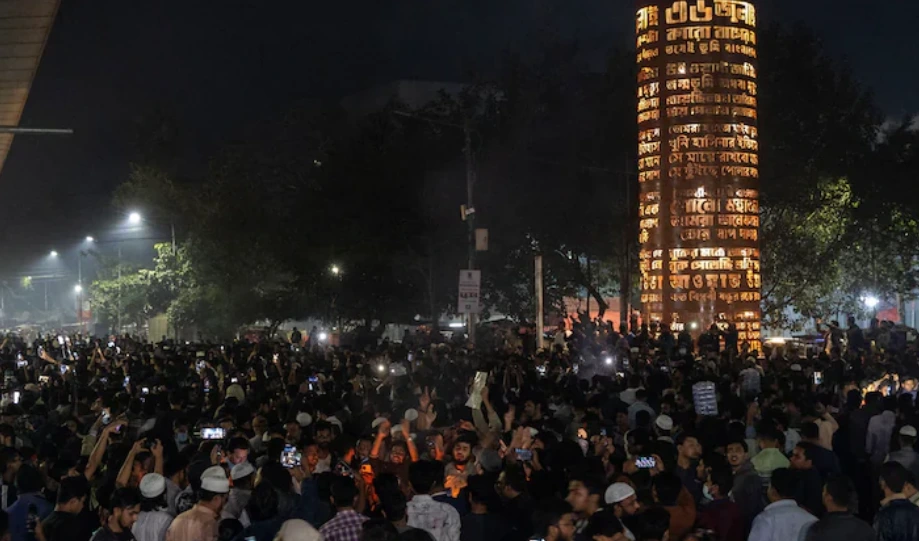
A disturbing incident of mob violence against a minority community has been reported from Bangladesh, where a Hindu man was lynched and his body set on fire amid escalating anti-India protests following the death of a radical student leader.
Mob lynching reported from Mymensingh district
A 30-year-old Hindu man, Dipu Chandra Das, was lynched by a mob in Bhaluka Upazila of Mymensingh district after allegations surfaced that he had insulted Islam. According to media reports, the incident took place on Thursday night at an industrial area where Das was employed.
Das was accused of making derogatory remarks about Islam and Prophet Muhammad during an event organised at his workplace to mark World Arabic Language Day. The allegations spread rapidly within the factory premises and nearby areas, leading to heightened tension.
Eyewitness accounts cited in media reports said Das was assaulted by an angry crowd and died on the spot. After his death, the mob allegedly tied his body to a tree, beat it while raising slogans, and later set it on fire.
Body burnt at multiple locations, traffic disrupted
The violence did not stop there. Reports suggest the mob later moved Das’s body to a nearby bus stand area and again set it ablaze. Subsequently, the body was taken to the Dhaka–Mymensingh highway, where it was burned once more, leading to panic among locals and a temporary disruption of traffic on the busy stretch.
Confirming the incident, the local administration said a person was killed following allegations of insulting the Prophet. Officials added that the body has been taken into police custody and the situation is being monitored.
Interim government condemns violence
The lynching took place against the backdrop of widespread protests across Bangladesh following the death of Sharif Osman Hadi, a prominent leader linked to the July Uprising. The Muhammad Yunus-led interim government strongly condemned the killing, stating that there is no place for such violence in the country.
In an official statement, the government appealed to citizens to reject hatred and violence, stressing that those responsible for the crime would not be spared.
Anti-India sentiment intensifies after Hadi’s death
Tensions have been high in Bangladesh since Hadi’s death, with protests, vandalism and arson reported in several cities. Demonstrators targeted prominent media offices and symbolic locations linked to the country’s political history.
Hadi was known for his sharp criticism of India and the former prime minister, whose government was ousted during last year’s uprising. Groups formed after the political upheaval have been actively mobilising street protests and campaigns that fuel anti-India sentiment, particularly after the former premier went into exile in India.
The lynching of Dipu Chandra Das has further raised concerns over the safety of minority communities amid the ongoing unrest in the country.
Latest world news
Bangladesh rocked by violent protests after student leader Sharif Osman Hadi’s death, anti-India slogans raised
Bangladesh has witnessed widespread violence and protests following the death of student leader Sharif Osman Hadi, with arson, anti-India slogans and a nationwide security clampdown.
Published
2 days agoon
December 19, 2025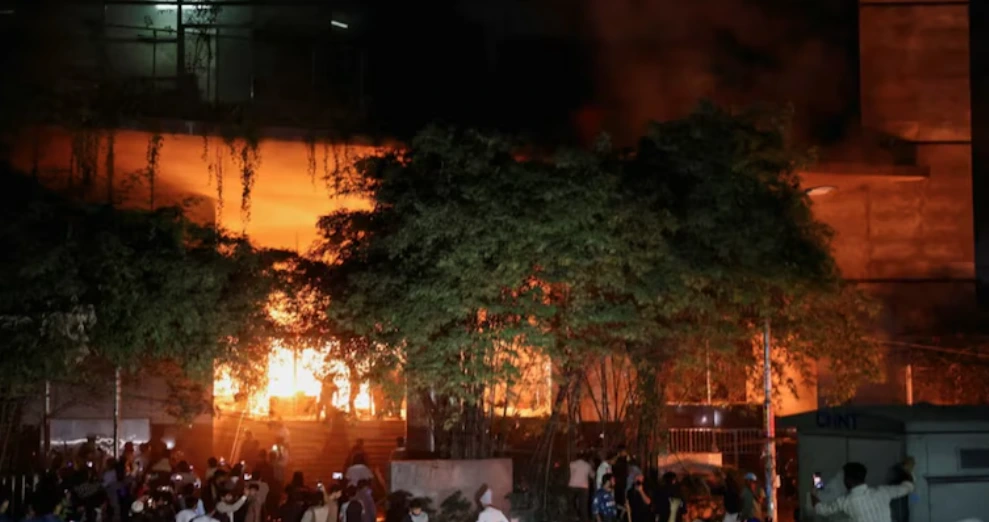
Violent protests erupted across Bangladesh after the death of student leader and political figure Sharif Osman Hadi, triggering fresh instability in the country and a sharp rise in anti-India sentiment. The situation turned volatile in Dhaka and several other cities as thousands of demonstrators poured onto the streets demanding swift action against those responsible for his killing.
Hadi, 32, was shot in the head by masked assailants while launching his election campaign in Dhaka last Friday. He was later airlifted to Singapore for treatment, where he succumbed to his injuries. Known for his polarising views and strong anti-India rhetoric, Hadi had emerged as a prominent face during the 2024 student uprising that led to the ouster of former prime minister Sheikh Hasina.
Fires, arson and tense streets in Dhaka
Soon after news of Hadi’s death broke, protests intensified in the Bangladeshi capital. Several buildings, including those housing leading media organisations, were set on fire, with authorities confirming that staff members were trapped inside during the blaze. Fire services later said the situation was brought under control, while security forces were deployed in large numbers to prevent further violence.
Demonstrators were seen chanting slogans invoking Hadi’s name, vowing to continue protests until those behind the attack were arrested. Multiple areas in Dhaka remained tense late into the night as police and paramilitary units attempted to restore order.
Protests spread, Indian mission targeted in Chittagong
Violence was not limited to the capital. In the port city of Chittagong, protesters gathered outside the Indian Assistant High Commission, raising anti-India slogans amid heightened anger on the streets. Similar unrest was reported from other parts of the country, signalling the widening scale of the crisis.
In Rajshahi, demonstrators torched Bangabandhu Sheikh Mujibur Rahman’s residence and an Awami League office, causing extensive damage. Authorities have not yet released a detailed assessment of losses, but security has been tightened across sensitive locations.
Anti-India sentiment deepens diplomatic strain
The latest unrest comes amid deteriorating ties between India and Bangladesh following Sheikh Hasina’s flight to Delhi. Earlier in the week, protesters under the banner of “July Oikya” marched towards the Indian High Commission in Dhaka, demanding Hasina’s return and raising hostile slogans against India.
India has formally conveyed its concerns to Dhaka over threats to its diplomatic missions and inflammatory statements by Bangladeshi political figures. New Delhi has rejected allegations linking India to the attack on Hadi, calling such claims false and misleading.
Yunus calls for calm, state mourning announced
In a televised address, interim chief Muhammad Yunus described Hadi’s death as an “irreparable loss” to Bangladesh’s political and democratic space. He urged citizens to exercise restraint, warning that continued violence could derail the country’s path towards a credible election.
The interim administration has announced a day of state mourning in Hadi’s honour, with national flags to fly at half-mast and special prayers planned nationwide. Bangladesh has been under an interim government led by Yunus since August 2024, with national elections scheduled for February 12.
India issues advisory for its nationals
Amid the unrest, the Indian High Commission in Dhaka issued an advisory asking Indian nationals in Bangladesh to avoid non-essential travel and limit movement outside their residences. Emergency contact details of Indian missions have been shared for assistance.
Manhunt launched for attackers
Bangladesh police have launched a manhunt for those behind Hadi’s killing, releasing photographs of two suspects and announcing a reward of five million taka for information leading to their arrest. Yunus has described the attack as a premeditated attempt by a powerful network to sabotage the electoral process.
Latest world news
India closes two more visa centres in Bangladesh amid worsening security concerns
India has temporarily closed visa application centres in Rajshahi and Khulna, citing security concerns following protests near Indian establishments in Bangladesh.
Published
3 days agoon
December 18, 2025
India has shut two additional Indian Visa Application Centres (IVACs) in Bangladesh — in Rajshahi and Khulna — citing the prevailing security situation in the country. The move comes a day after protests were held near the Indian High Commission in Dhaka by radical groups, raising concerns over safety around Indian establishments.
An official notification issued on the IVAC website said the centres in Rajshahi and Khulna were closed on December 18 due to security reasons. Applicants who had appointments scheduled for the day have been assured fresh slots at a later date.
The decision follows the temporary shutdown of the visa application centre in Dhaka earlier, even as New Delhi flagged a rise in open hostility towards India, particularly targeting the northeastern region, under the interim government led by Muhammad Yunus.
Bangladesh rejects India’s security assessment
Bangladesh’s Foreign Affairs Advisor Touhid Hossain dismissed India’s concerns and denied any deterioration in law and order. He distanced the interim administration from recent inflammatory remarks made by National Citizen Party (NCP) leader Hasnat Abdullah, who had publicly threatened to cut off India’s “seven sisters” and also issued comments against the Indian High Commissioner.
Hossain said the individual was not part of the government and termed his statements irrelevant. He also claimed that security arrangements were in place and that the shutdown of the Dhaka visa centre coincided with a local programme, which raised security-related questions.
Political backdrop and India’s response
The NCP, which emerged from student-led protests that led to the fall of the previous Awami League government, has extended support to the Yunus-led interim setup. Though the party has limited political presence, radical elements associated with it have organised anti-India demonstrations in Dhaka.
India, in an earlier statement, urged the interim government to ensure internal law and order and hold peaceful elections so that Bangladesh can return to an elected administration. However, the interim government appeared dismissive of this advice, with Hossain stating that India need not advise Dhaka on conducting elections.
Observers in Bangladesh have pointed out that delays in elections could benefit the unelected interim government, while radical groups may attempt to create disruptions by projecting India as a hostile actor. New Delhi has so far maintained a measured stance, despite remarks that directly question India’s sovereignty and territorial integrity, particularly in the northeastern region.

India announces T20 World Cup 2026 squad, Shubman Gill dropped as Axar Patel named vice-captain

Veteran Malayalam actor and filmmaker Sreenivasan passes away at 69

T20 World Cup 2026: Selectors weigh Shubman Gill role as India squad announcement awaited

Thick smog engulfs Delhi, flights and trains delayed as air quality slips to very poor



